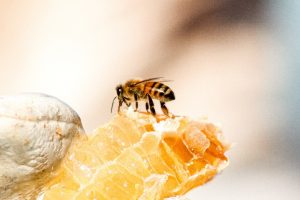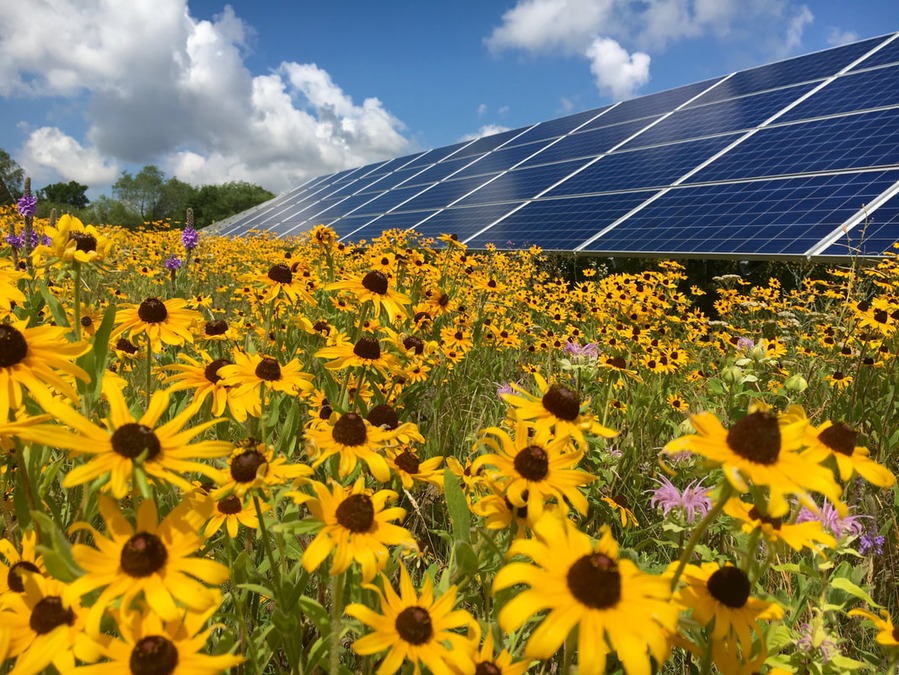What is a solar bee farm?
One of the most entrancing utilizations of the double utilize sunlight-based ranches, for my purposes, is the sun-powered apiaries, in particular the sun-oriented ranches where one likewise keeps bumble bees. At the end of the day, how might you NOT love the thought? Sunlight-based apiaries are customary sun-oriented ranches that produce energy, yet they likewise give a place of refuge to the honey bees – one could try to say the wellspring of life on our planet. All things considered, as per Green Matters, “In the event that honey bees went wiped out, it would be a cascading type of influence with regards to biological system obliteration.
As per Britannica, plants wouldn’t have the option to repopulate without people hand-pollinating them. The creatures who eat those plants would then begin to starve and vanish, then their hunters’ numbers would begin to diminish, etc.” Thus, it isn’t a long way from reality to say that these little fluffy companions are imperative to numerous biological systems and should be safeguarded no matter what! Numerous people attempt to do their part in safeguarding the honey bees by making bug and honey bee “lodgings”, by not cutting their grass to make pollinator-accommodating nurseries.
As sun-powered environmentally friendly power has been blasting onto the scene, pollinators have been confronting a legendary emergency. Bumble bees and other pollinator populations are declining at a disturbing rate all over the planet. The utilization of orderly rural pesticides and unfortunate sustenance brought about by contracting local living spaces are adding to debilitated resistant frameworks and sickness transmission among honey bee populations.
Working with sun-powered energy engineers, Uncovered Honey beekeepers are assisting with creating pollinator desert springs and gathering Sun based Developed Honey from hives set upon sun-oriented exhibits. These sun-oriented clusters have been planted with blooming living space that has been deductively intended to give a regenerative shelter to pollinators. These imaginative sun-powered exhibits are recovering local living space, recently lost to industrialized agribusiness.
Sunlight-based apiaries can be considered an expansion of these preservation endeavors. As per New Energy, a Minnesota-based free non-benefit association, sun-powered apiaries were “spearheaded in Britain around 2010, then bounced the lake to Canada and New Britain, then, at that point, to Minnesota and the Midwest and forward to the Pacific coast.” Presently, in Europe, sun-oriented honey bee ranches are a typical sight in Spain, France, and Britain.
How does it work?
Pollinators — like honey bees, butterflies, and different bugs — are basic to the progress of around 35% of worldwide food crop creation. To flourish, pollinators should have a reasonable environment. Laying out pollinator-accommodating plants under and around ground-mounted sun-based clusters can possibly give this basic environment an advantage to both the pollinators and close-by horticulture. Be that as it may, various significant inquiries stay about the effects of pollinator-accommodating sunlight based and how to execute it at a huge scope.
The low-developing and pollinator-accommodating plants under the sun-oriented clusters supply food and asylum for honey bees. This sun-powered honey bee match, a perfect pair, transforms the sun-based fields into impeccably biodiverse regions and changes the land the board by eliminating the requirement for cutting under the sunlight-powered chargers or putting re-appropriated rock to the ground, which, incidentally, likewise normally requires the executives and reward because of rock disintegration.
An even later distributed article, again by New Energy, gathers the prescribed procedures in sun-powered beekeeping in ten proof-based suggestions distributed by Lancaster College. As per a portion of these suggestions I summed up from them, it is fundamental to
– Convey plainly about biodiversity to fix the assumptions,
– Work with a nearby environmentalist to decide the qualities of the site,
– Place bee colonies around 6m. away from the boards to forestall the honey bee crap collection (which ends up being famously difficult to clean),
– Make neighborhood interest to reinforce joins with the territorial local area.
What are the benefits of solar bee farms?
Apart from the dual use I mentioned above, sun-powered apiaries can likewise enormously help the local area in their environmental elements. Consider it: this imaginative application can turn into natural training an open door. Sun-based honey bee homesteads can turn out to be natural life-safe houses for different bugs and critters.

Moreover, the honey delivered locally can be marked by the local area to turn out revenue and make a feasible plan of action. Whenever allowed such an opportunity, nearby networks become more engaged with clean energy matters and take part in securing and enhancing the neighborhood climate.
It is found that pollinator living spaces can lessen activities and upkeep costs over the long haul because of lower cutting and herbicide costs.
This study shows, how to increase agrivoltaics, including pollinator natural surroundings, and boost the consolidated worth of sun-powered energy, pollinators, and farming. We anticipate considering the pollinator projects applications, in addition to all the other agrivoltaics applications.
Image Source: https://beecityusa.org/

